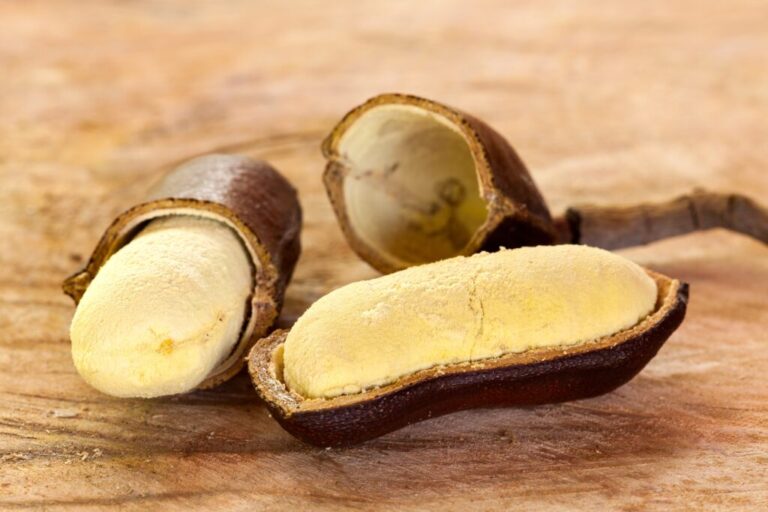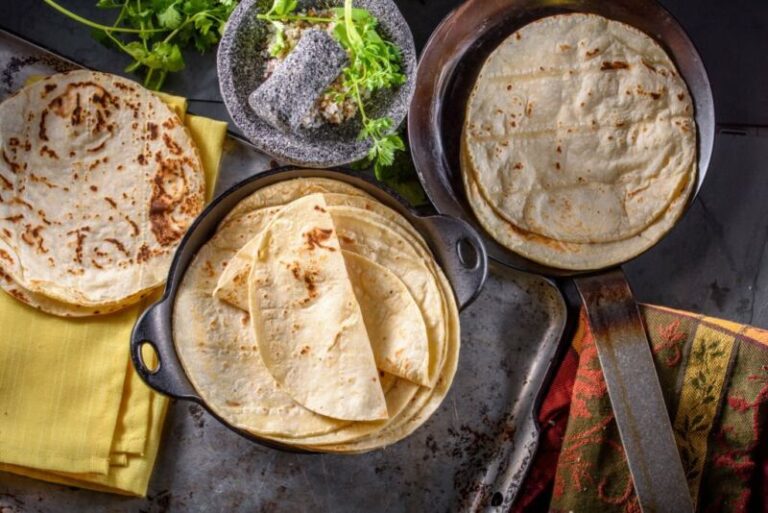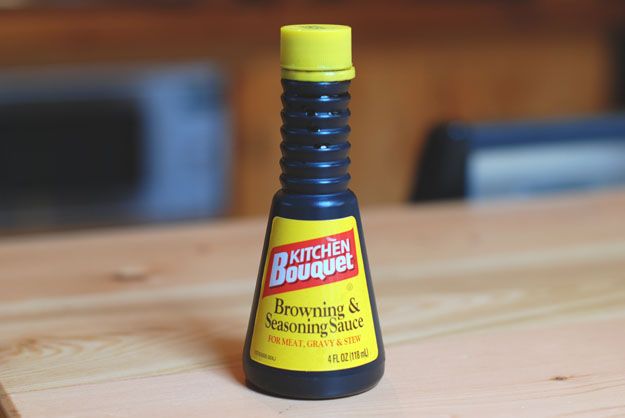How To Fix Grainy Cheese Sauce?
When indulging in a delicious bowl of mac and cheese, a creamy cheese sauce is the key to success. However, sometimes our cheese sauce turns out to be more grainy, ruining the overall experience. In this article, we will delve into the reasons behind grainy cheese sauce and provide easy solutions to fix this issue.
A smooth and creamy texture is essential for a satisfying cheese sauce. It enhances the overall mouthfeel and ensures that each bite is a delight. Grainy cheese sauce, on the other hand, is stinky and can be off-putting. By understanding the causes and implementing the solutions we will discuss, you can achieve a velvety smooth cheese sauce every time.
Addressing the issue of grainy cheese sauce early on is crucial to avoid disappointment and waste. Imagine spending time and effort preparing a delightful dish, only to be let down by a subpar cheese sauce. By identifying and rectifying the problem, you can salvage your sauce and elevate your culinary creations.
Reasons for Gritty Cheese Sauce
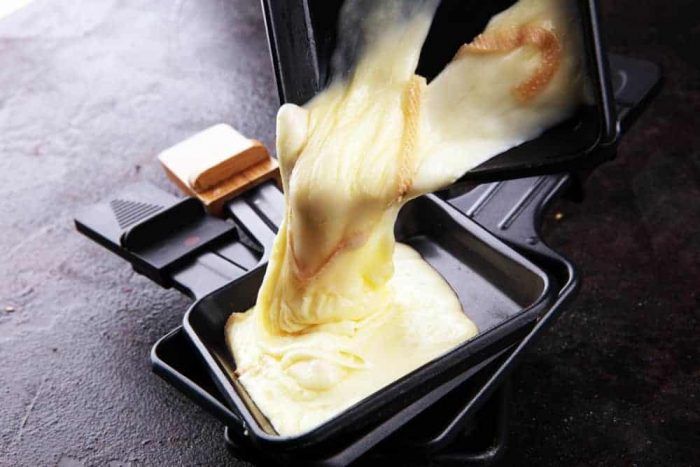
Insufficient Fat Content
One common reason for grainy cheese sauce is the use of low-fat dairy products or skim milk. While these options may seem healthier, they lack the fat content to achieve a smooth texture. The fat in dairy products helps emulsify the sauce and create a creamy mouthfeel. Therefore, opting for full-fat dairy products can significantly improve the texture of your cheese sauce.
When low-fat ingredients are used, it becomes challenging to achieve a smooth texture. The reduced fat content prevents the sauce from binding properly, resulting in a grainy consistency. By incorporating higher-fat options, such as whole milk or heavy cream, you can improve the texture and taste of your cheese sauce.
Excessive Acidic Ingredients
Acidic ingredients, such as vinegar or lemon juice, can cause separation in dairy-based sauces, including cheese sauce. The acid curdles the milk and homemade cheese, leading to a grainy texture. Minimizing the use of acidic ingredients or finding alternative ways to add flavor can help prevent this issue.
The curdling effect of acidic elements is particularly evident when making cheese from scratch. While homemade cheese can be a delightful addition to cheese sauce, it requires careful handling to avoid curdling. By understanding the pH levels of ingredients and their impact on dairy products, you can control the texture of your cheese sauce.
To avoid grainy cheese sauce caused by acidity, it’s recommended to minimize the use of acidic ingredients. Instead, consider alternative flavorings such as herbs, spices, or even a touch of mustard to add a tangy kick without compromising the smoothness of the sauce.
High Heat Exposure
Exposing cheese sauce to high heat can result in curdling, burning, and congealing, leading to a grainy texture. The proteins in cheese are delicate and can break down when subjected to excessive heat. To prevent this, it’s essential to maintain low heat while working with dairy-based sauces.
Maintaining low heat throughout the cooking process allows the cheese to melt gradually, resulting in a smoother sauce. It’s crucial to exercise patience and avoid rushing the process. Slow, gentle heat is the key to achieving the desired texture and consistency.
Tips to Avoid Gritty Cheese Sauce
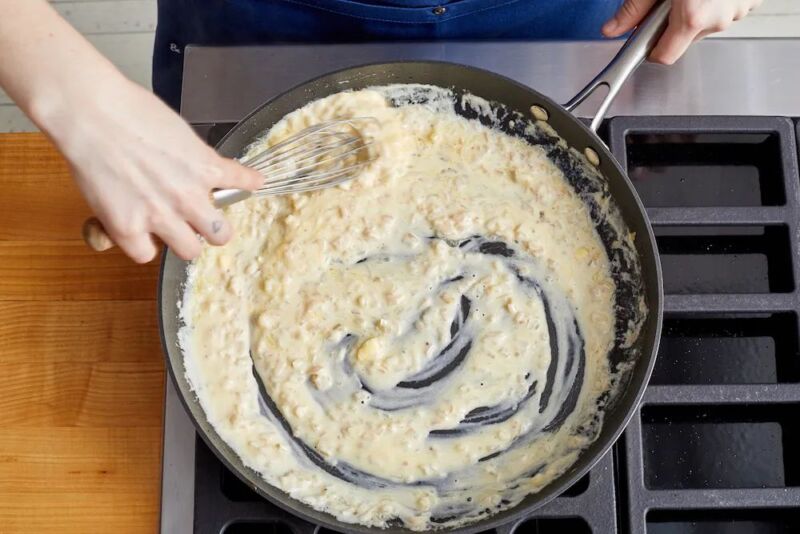
Prioritize the Preparation of a Good Roux
A good roux serves as the foundation for a creamy cheese sauce. It is a mixture of fat (typically butter) and flour cooked together to form a thick paste. The roux helps thicken the sauce and provides a smooth texture. Taking the time to prepare a well-cooked roux sets the stage for a successful cheese sauce.
When preparing a roux, it is recommended to use butter instead of oil. Butter adds richness and flavor, enhancing the overall taste of the sauce. Oil can result in a less creamy texture and may contribute to graininess. Opting for butter will yield a velvety smooth sauce.
Maintain Low Heat throughout the Cooking Process
Maintaining low heat throughout cooking is crucial for achieving a smooth cheese sauce. Low heat ensures that the cheese melts evenly without curdling or congealing. It allows the proteins in the cheese to break down slowly, resulting in a luscious, creamy texture.
Keeping the heat gentle gives you better control over the sauce’s consistency. It also prevents scorching or burning, leading to a grainy texture. Patience is vital in cheese sauce preparation, so resist the temptation to crank up the heat.
Allow Cheese to Reach Room Temperature
To avoid curdling in your cheese sauce, minimizing drastic temperature changes is essential. Bringing the cheese to room temperature before adding it to the sauce helps prevent the proteins from clumping together. The gradual incorporation of room-temperature cheese leads to a smoother sauce.
Instead of adding cold cheese directly to the sauce, let it gradually come to room temperature. This can be done by taking the cheese out of the refrigerator 30 minutes before using it. Room-temperature cheese blends more seamlessly into the sauce, reducing the chances of graininess.
Avoid Pre-Grated Cheese
Pre-grated cheese often contains additives and powders to prevent clumping and extend shelf life. These additives can interfere with smooth melting, resulting in a grainy texture. It’s best to grate your cheese from a whole block to avoid this.
Grating your own cheese allows you to control the texture and quality. It ensures that you are working with pure cheese without any added ingredients. Freshly grated cheese melts more smoothly and produces a creamier sauce. Invest in a good quality cheese grater to achieve the best results.
Add Cheese Gradually
When incorporating cheese into your sauce, adding it gradually while whisking continuously is essential. This method melts the cheese evenly, resulting in a smoother consistency. Avoid dumping a large amount of cheese into the sauce simultaneously, as it can overwhelm the sauce and contribute to graininess.
Alternatively, some sources recommend removing the sauce from the heat before adding the cheese. The residual heat in the sauce is often enough to melt the cheese without the risk of overheating or curdling. Experiment with both methods to find the technique that works best for you.
Incorporate Eggs as the Final Step
If your cheese sauce recipe includes eggs, adding them at the end of the cooking process is crucial. Adding eggs too early or subjecting them to high heat can result in curdling and graininess. Adding the eggs last ensures that they are incorporated smoothly into the sauce without compromising its texture.
Before adding the eggs to the sauce, whisk them separately until well beaten. This helps to ensure that the eggs blend seamlessly into the cheese mixture without creating lumps or graininess. Slowly incorporate the beaten eggs into the sauce while whisking continuously for the best results.
Include Starch as a Stabilizer
Adding a small cornstarch to your cheese sauce can help stabilize the mixture and prevent separation. Cornstarch acts as a thickening agent and enhances the sauce’s smoothness. It helps bind the ingredients together, resulting in a creamy texture and reducing the chances of graininess.
How to Fix Grainy Cheese Sauce
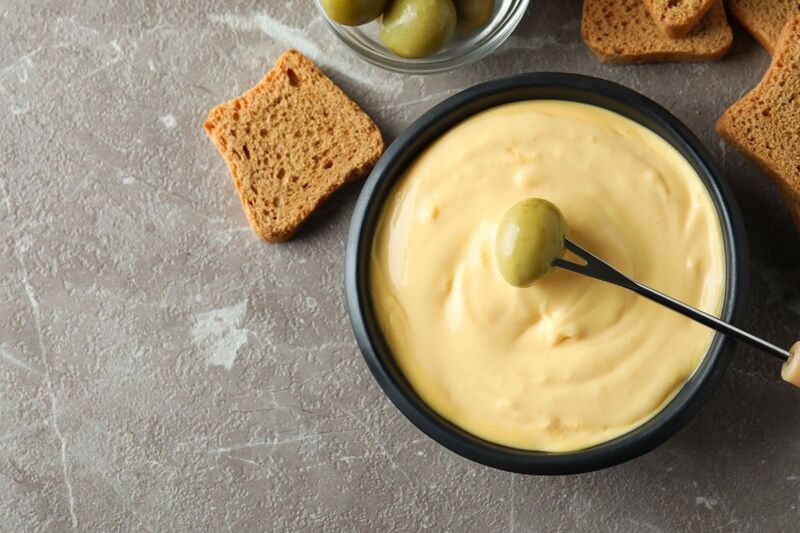
Add a Splash of Cold Water
If you find yourself with a grainy cheese sauce, a straightforward fix is to whisk in a splash of cold water. The cold water helps restore the structure of the sauce by re-emulsifying the fats and proteins. Gradually add tiny splashes of cold water while whisking vigorously until the sauce becomes smooth again.
To avoid over-thinning the sauce, adding the cold water in small increments is essential. Pour tiny splashes of cold water and whisk continuously until the desired consistency is achieved. This method allows you to control the water added and prevents the sauce from becoming too watery.
Add Lemon Juice
Lemon juice can be an effective remedy for fixing grainy cheese sauce due to its acidic properties. The acid in lemon juice helps break down the proteins contributing to the grainy texture. Adding a small amount of freshly squeezed lemon juice to the sauce and whisking well can restore its smoothness.
For the best results, using fresh lemon juice rather than bottled juice is essential. Fresh lemon juice contains higher levels of natural acids, which are more effective in fixing grainy cheese sauce. Fresh lemon juice’s bright, tangy flavor also adds a refreshing element to the sauce.
Turn Down the Heat
If your cheese sauce becomes grainy due to high heat, the first step is to turn down the heat immediately. High heat can cause the proteins in the cheese to clump together, resulting in a gritty texture. By reducing the heat and allowing the sauce to cool slightly, you can salvage the sauce and prevent further graininess.
Patience is vital when it comes to cheese sauce preparation. Rushing the process by cranking up the heat or adding ingredients too quickly can lead to graininess. Take your time, maintain a gentle heat, and allow the cheese to melt gradually for the best results.
Beat the Sauce Vigorously
If you’ve tried the solutions above and still have a grainy cheese sauce, vigorous whisking or beating may help bring everything together. The vigorous motion helps break down any remaining lumps and encourages the fats and proteins to re-emulsify. Keep whisking or beat the sauce with a hand mixer until the graininess disappears and the sauce becomes smooth.
Vigorous mixing is crucial in achieving a smoother consistency in your cheese sauce. It helps evenly distribute the ingredients, break down any clumps, and re-establish the emulsification process. Be persistent and continue whisking or beating until the sauce reaches the desired smoothness.
How to Fix Grainy Nacho Cheese Sauce and Other Variations
The methods mentioned above can be applied to fix grainy nacho cheese sauce or any other variation of cheese sauce. The fundamental principles of controlling heat, gradually incorporating ingredients, and carefully whisking remain the same. Adjust the seasonings and flavorings accordingly, and follow the steps outlined earlier to salvage your grainy sauce and transform it into a creamy delight.
Can You Eat Grainy Cheese Sauce?
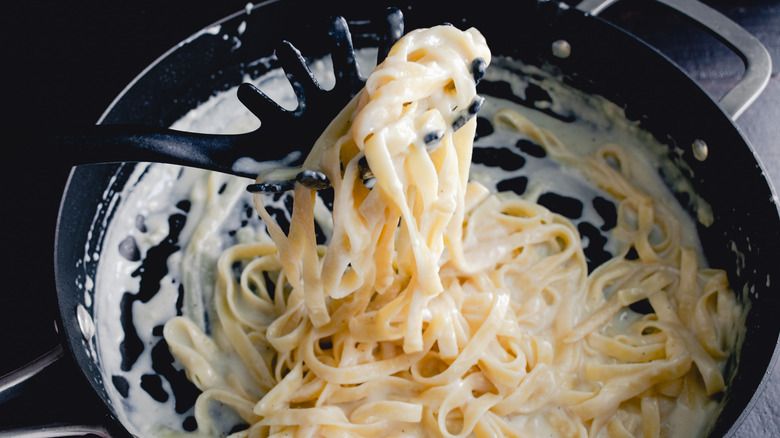
While it is technically safe to consume grainy cheese sauce, the graininess can be unappetizing and affect the overall enjoyment of your dish. The texture may feel unpleasant, and the flavor might need smoother. Therefore, fixing the issue rather than settling for a less-than-perfect sauce is highly recommended.
By addressing the graininess in your cheese sauce, you can elevate the quality of your dish and ensure a more enjoyable dining experience. With the easy solutions in this article, there’s no need to settle for subpar texture and taste. Take the time to implement the fixes and savor the results of a velvety smooth cheese sauce.
Fixing Thick Cheese Sauce
If your cheese sauce turns out too thick, it can contribute to a grainy texture. You can gradually add more liquid to thin out the sauce to fix this. Use additional milk, cream, or broth and whisk continuously until the desired consistency is achieved. Be mindful not to add too much liquid at once, as it can result in a watery sauce.
When thinning out a thick cheese sauce, it’s essential to beat it vigorously to incorporate the added liquid evenly. Vigorous beating helps break down any lumps and encourages smooth blending. Continue whisking or beating until the sauce reaches the desired consistency and becomes silky and pourable.
Pro Tips for Making Cheese Sauce
When making cheese sauce, choosing cheeses with high melting points is essential. Cheeses such as cheddar, Gruyère, or Monterey Jack melt smoothly and contribute to a creamy texture. Cheese with lower melting points, like mozzarella or fresh cheese, may not melt as smoothly and can result in graininess.
Aged or hard cheeses, such as Parmesan or Asiago, tend to have a drier texture and may melt slower. Avoid using these cheeses as the primary components of your cheese sauce to achieve a smoother consistency. They are better suited for grating over the sauce as a garnish.
To ensure a smooth and flavorful cheese sauce, avoiding additives and processed ingredients is best. Opt for natural, high-quality cheeses and fresh ingredients. Avoid using processed cheese products, as they often contain additives and stabilizers that can affect the texture and flavor of your sauce.
To maintain the integrity of the cheese and achieve a smoother sauce, it’s recommended to add the cheese at the end of the cooking process. Adding cheese too early or cooking it for an extended period can lead to separation and graininess. You ensure a creamy and luscious sauce by incorporating the cheese just before serving.
Conclusion
In conclusion, grainy cheese sauce can be disappointing, but it can be avoided and fixed with simple techniques. Remember the following key points:
- Use enough fat in the sauce and avoid low-fat dairy products.
- Minimize the use of acidic ingredients that can cause separation.
- Maintain low heat throughout the cooking process.
- Take your time to make a good roux using butter.
- Bring the cheese to room temperature before incorporating it into the sauce.
- Avoid pre-grated cheese and grate your own from a whole block.
- Add the cheese slowly, and consider removing the sauce from the heat before adding it.
- Add eggs at the end and whisk them well before incorporating them.
- Use cornstarch to stabilize the sauce and prevent separation.
Patience is essential when making the cheese sauce. Take your time, control the heat, and incorporate the ingredients gradually. By following these practices, you can achieve a smooth, creamy, and delicious cheese sauce every time.
Every cook’s journey with cheese sauce is unique, and it may take some experimentation to find the perfect technique that suits your preferences. Feel free to try different cheeses, adjust the seasonings, and refine your process. With each attempt, you’ll gain more confidence and skill in creating the ultimate cheese sauce.
So, don’t settle for grainy cheese sauce. With the knowledge and techniques in this article, you can master the art of creating smooth, creamy, and irresistible cheese sauces that will elevate your dishes to new heights of deliciousness. Happy cooking!

